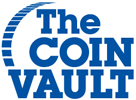Following the aftermath of the early-20th century in Europe caused by disastrous world wars, smaller local and regional wars, political scheming between rival nations, and the deterioration of empires, the latter half of the century stood out for what seemed like peace amongst all the chaos. After the First and Second World Wars, world order was coming back as the United States and the Soviet Union emerged as the two great superpowers of the nuclear age. However, distrust of the West would form and the creation of a European Union would lead to a common currency between them. With help from authors Charles Morgan and Hubert Walker, we will take a closer look at Whitman Publishing’s 100 Greatest Modern World Coins and this last entry that graces the top 100.
#100 - Eurozone 1999 Euro Coin Sets
Western European powers rebuilt themselves physically, socially, and politically with heavy influence from America. In Eastern Europe, the same was mirrored and a “buffer zone” of states within were given by Western allies with Soviet Union influence. However, the West was losing trust and that circle of influence eventually turned into the Iron Curtain. Forced cooperation was enacted and foreign controlled governments began to form with the potential of mutual destruction the only thing keeping them from conflict.
As the second half of the 20th century came around, it was a massive political goal to have a more united Europe with British Prime Minister Winston Churchill heading the movement. He called for a “United States of Europe” in a speech given in 1946 at the University of Zurich. After a number of politicians followed and with help from the business sector, a road to a European Union was mapped out. Founders wanted to create a “supranational organization that emboldened cross-border trade in areas of steel, energy, and agriculture production.” Economies converged and the success of the programs created led other nations to join. By the time that the Maastricht Treaty was signed and ratified in 1992, which was a plan for a common currency, there were 12 members of the EU. There are more than 25 current members of the organization today.
The euro was born in 1995 along with the term “cent.” On January 1, 1999, it came into effect and 12 countries adopted the currency. Belgium, France, Finland, the Netherlands, and Spain struck and issued euro coins set dated 1999, 2000, and 2001. Collectors were able to reserve these sets once the euro officially made it into circulation in 2002. Austria, Germany, Greece, Portugal, and Luxembourg eventually joined the other six states as issuers of the coins in 2002.
The new coins were uniform in their reverse design, composition, and denominations although some countries opted out of striking the lower denomination coins. The obverse of the coin allowed for each individual country to provide national characteristics to the design. Altogether, the coins were symbolic of a continent unifying in cultural and physical ways.
1999 Euro Sets continue to be loved by collectors as they were upon their initial release.
